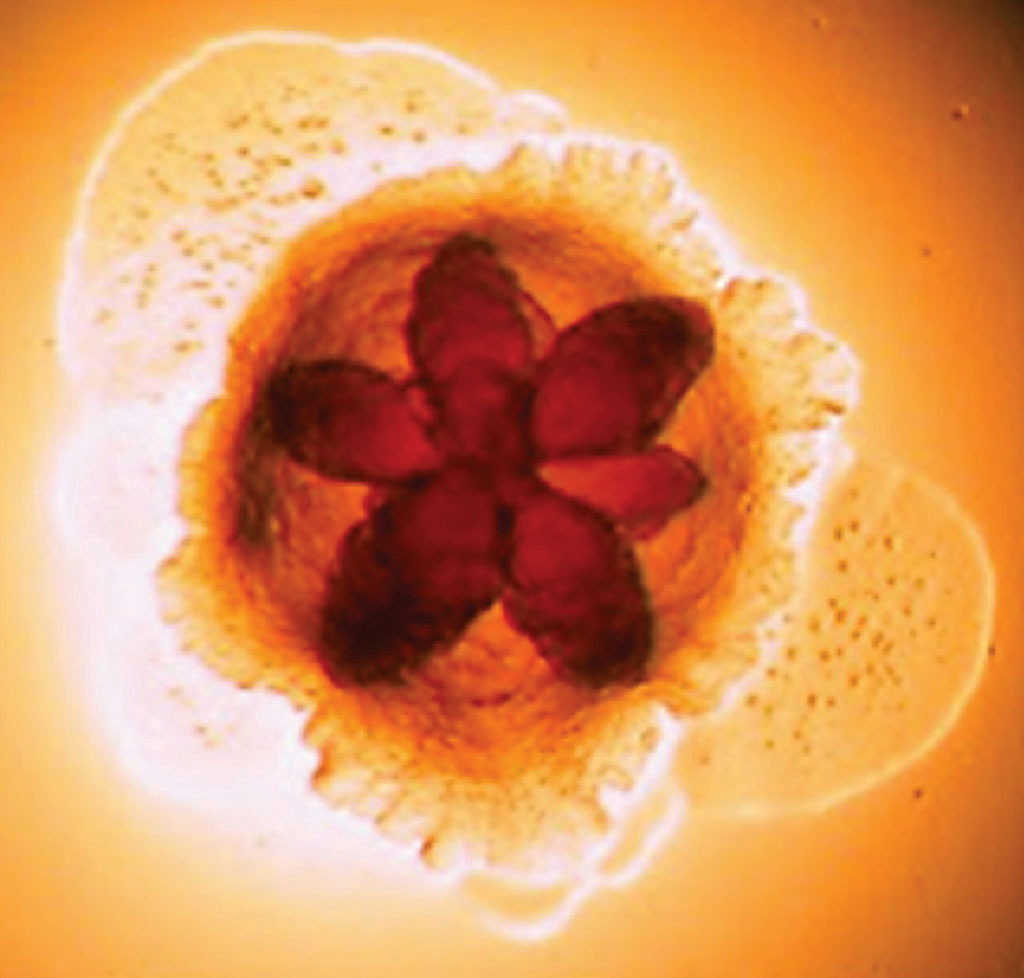Common Bacteria of Gum Disease Linked to Rheumatoid Arthritis
By LabMedica International staff writers
Posted on 28 Dec 2016
A bacterium known to cause chronic inflammatory periodontal infections may also triggers the inflammatory “autoimmune” response characteristic of chronic, joint-destroying rheumatoid arthritis (RA).Posted on 28 Dec 2016
An estimated 1.5 million people nationwide live with rheumatoid arthritis and current treatments with steroids, immunotherapy drugs, and physical therapy help some by reducing or slowing the crippling and painful joint deformities, but not in all patients. The exploration of alternative treatment options is necessary.

Image: A colony of Aggregatibacter actinomycetemcomitans, showing the characteristic flower-like morphology (Photo courtesy of UCL Eastman Dental Institute).
Scientists at the Johns Hopkins University School of Medicine (Baltimore, MD, USA) and their colleagues used mass spectrometry to define the microbial composition and antigenic repertoire of gingival crevicular fluid in patients with periodontal disease and healthy controls. Periodontitis was characterized by the presence of citrullinated autoantigens that are primary immune targets in RA. The team developed a test using the bacterium and pore-forming toxin leukotoxin A (LtxA) to detect antibodies against Aggregatibacter actinomycetemcomitans in blood using 196 samples from a large study of patients with RA.
Periodontitis was characterized by the presence of citrullinated autoantigens that are primary immune targets in RA. The citrullinome in periodontitis mirrored patterns of hypercitrullination observed in the rheumatoid joint, implicating this mucosal site in RA pathogenesis. Proteomic signatures of several microbial species were detected in hypercitrullinated periodontitis samples. Among these, A.actinomycetemcomitans, but not other candidate pathogens, induced hypercitrullination in host neutrophils. They identified LtxA as the molecular mechanism by which A.actinomycetemcomitans triggers dysregulated activation of citrullinating enzymes in neutrophils, mimicking membranolytic pathways that sustain autoantigen citrullination in the RA joint.
These data were similar to patients, with periodontal disease with approximately 60% positivity, but quite different in healthy controls, who only had 11% of people positive for A. actinomycetemcomitans. More strikingly, exposure to A. actinomycetemcomitans was a major determinant in the production of antibodies to citrullinated proteins in patients with genetic susceptibility to RA. Moreover, LtxA induced changes in neutrophil morphology mimicking extracellular trap formation, thereby releasing the hypercitrullinated cargo. Exposure to leukotoxic A. actinomycetemcomitans strains was confirmed in patients with RA and was associated with both anticitrullinated protein antibodies and rheumatoid factor. The study was published on December 14, 2016, in the journal Science Translational Medicine.
Related Links:
Johns Hopkins University School of Medicine














